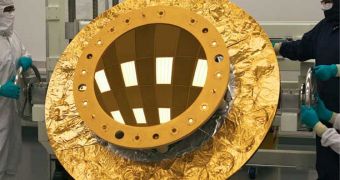After recent announcements that all 18 primary mirror segments for the NASA James Webb Space Telescope have been completed, officials at the American space agency say that the secondary mirrors destined to go on the next-generation space observatory have also been completed.
Unlike other space-based telescopes, the JWST will feature four different types of mirrors, each of them important in their own right. The fact that the recently-constructed set bears the designation “secondary” doesn't mean that they are dispensable.
In fact, the secondary mirrors are tremendously important for ensuring that the instruments aboard the massive telescope will interpret information in an appropriate manner. After polishing and gold-coating, the mirrors are now ready for integration.
In addition to the 18-segment, 25-square-meter primary mirror, the JWST also carries the secondary and tertiary mirrors, as well as the fine-steering mirrors. All of them are made from a very light metal called beryllium, which can holds its shape across a wide range of temperatures.
“As the only convex mirror on the Webb telescope, the secondary mirror has always been recognized to be the hardest of all of the mirrors to polish and test, so we are delighted that its performance meets all specifications,” explains expert Lee Feinberg.
“The Webb telescope convex secondary mirror is approximately the size of the Spitzer Space Telescope's primary mirror and is by far the largest convex cryogenic mirror ever built for a NASA program,” he goes on to say.
Feinberg holds an appointment as the Webb Optical Telescope manager at the NASA Goddard Space Flight Center (GSFC), in Greenbelt, Maryland. He adds that the secondary mirror is perfectly rounded, as opposed to the hexagonal primary mirror on the JWST.
The microscopic layer of gold that covers the mirror is meant to increase the instrument's efficiency in reflecting light at infrared wavelengths. Dedicated IR cameras aboard the telescope then pick up this light, which is usually emitted by cold and extremely distant objects.
“So why is this mirror so critical? Because the secondary mirror captures light from the 18 primary mirror segments and relays those distant images of the cosmos to the telescope's science cameras,” a NASA press release explains.
“The secondary mirror is mounted on folding 'arms' that position it in front of the 18 primary mirror segments. The secondary mirror will soon come to [GSFC], where it will be installed on the telescope structure,” the document adds.

 14 DAY TRIAL //
14 DAY TRIAL //